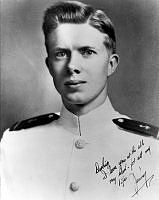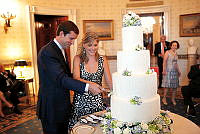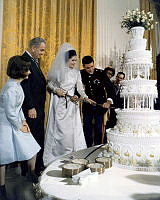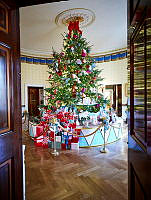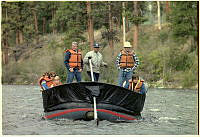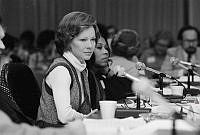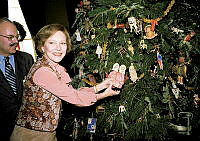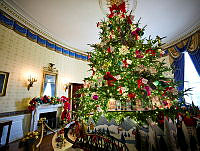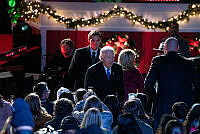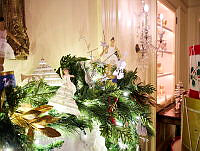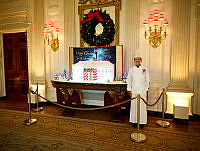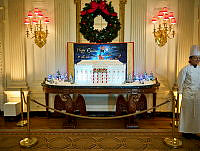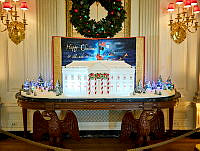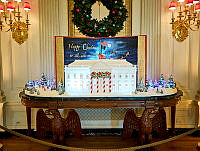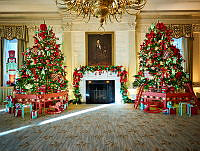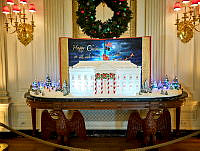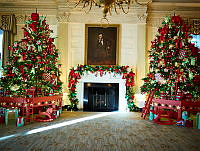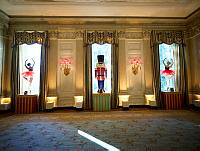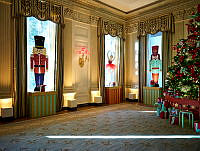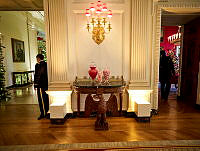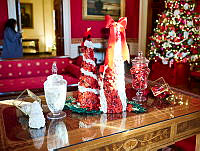Betty Ford
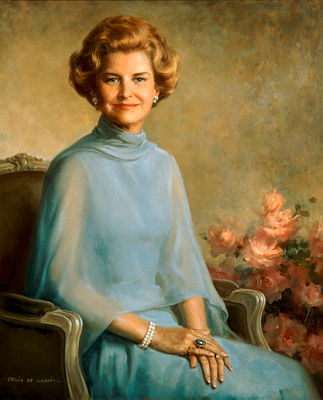
Elizabeth “Betty” Bloomer was born on April 8, 1918, in Chicago, Illinois, and spent most of her childhood in Grand Rapids, Michigan. She was raised by her parents William and Hortense Bloomer. As a young girl, Betty took up dancing, which quickly became her passion. After graduating from high school, she moved to Vermont to attend the Bennington School of Dance and soon after joined the auxiliary dance troupe led by prestigious dancer Martha Graham.1 In 1941, Betty returned to Michigan to spend time with family, and she taught dance and worked in the local department store. A year later, she married William G. Warren but the couple divorced in 1947.2
On October 15, 1948, Betty Bloomer married up-and-coming politician Gerald R. Ford, Jr., and within a month the couple moved to Washington, D.C. for Ford’s first term in Congress. Over the next decade, the Fords welcomed four children: Michael, John (Jack), Steven, and Susan.
Betty Ford never expected to become first lady. While her husband was known for his long tenure in the House of Representatives, public interest in the couple was minimal. It was not until Vice President Spiro Agnew resigned on October 10, 1973, that Gerald Ford was thrust into the spotlight as President Richard Nixon nominated him to the position. Less than a year later on August 9, 1974, President Nixon also resigned, and Betty Ford became the first lady.3
She quickly proved to be an outspoken, active first lady, supporting the passage of the Equal Rights Amendment and encouraging President Ford to appoint more women to senior government roles. She also became an advocate for women’s health after her breast cancer diagnosis just after moving into the White House. Betty underwent a radical mastectomy, and by publicly addressing her experience, she destigmatized breast cancer and inspired many American women to get their own preventative breast exams.4 Betty was never afraid to speak her mind, even if she disagreed with the president. As she aptly noted: “Why should my husband's job or yours prevent us from being ourselves? Being ladylike does not require silence.”5
Throughout her tenure as first lady, Betty Ford acted as hostess for many important events. Perhaps the most famous of these is the 1976 American Bicentennial, which culminated in a State Dinner for Queen Elizabeth II and Prince Philip at the White House on July 7, 1976.6 She also oversaw a renovation of the President’s Dining Room on the Second Floor of the White House.
Gerald Ford lost the election of 1976 to Jimmy Carter, and after leaving the White House, the Fords moved to Rancho Mirage, California. There, Betty Ford faced another health crisis: her addiction to alcohol and pain medication. Once again, she met the challenge with transparency, attending rehabilitation at Naval Regional Medical Center in Long Beach, California, and publishing two memoirs about her experiences: The Times of My Life (1978) and Betty: A Glad Awakening (1987).7 In 1982, she co-founded The Betty Ford Center, a treatment center for drug and alcohol rehabilitation in Rancho Mirage, California. There, she helped many others who were struggling with addiction on their road to recovery.
In the final years of her life, she continued to promote gender equality, women’s healthcare, and addiction treatment, and spoke out about the HIV/AIDS crisis. For her lifelong activism, Betty Ford received many honors and accolades, including the Presidential Medal of Freedom, induction into the National Women’s Hall of Fame, and a Congressional Gold Medal.8 Betty Ford passed away on July 8, 2011. She is buried alongside her husband at the Gerald R. Ford Presidential Museum in Grand Rapids, Michigan.
Footnotes & Resources
- “Famous Friends: Betty Ford and Martha Graham,” Gerald R. Ford Presidential Library and Museum, https://fordlibrarymuseum.tumblr.com/post/163792130422/famous-friends-betty-ford-and-martha-graham.
- Lisa McCubbin, Betty Ford: First Lady, Women’s Advocate, Survivor, Trailblazer (New York: Gallery Books, 2018).
- Sarah Fling, “Betty Ford: Activist First Lady,” White House Historical Association, https://www.whitehousehistory.org/betty-ford-activist-first-lady.
- Ibid.
- Betty Ford, “Remarks to the International Women's Year Conference, Cleveland, Ohio,” Speech, October 25, 1975, Gerald R. Ford Presidential Library and Museum, https://www.fordlibrarymuseum.gov/library/bbfspeeches/751025.asp#:~:text=Why%20should%20my%20husband's%20job,women%20away%20from%20their%20families.
- “American Bicentennial Celebration,” Gerald R. Ford Presidential Library and Museum, https://www.fordlibrarymuseum.gov/library/exhibits/bicentennial/bicentennial.asp.
- See Betty Ford, The Times of My Life (New York: Harper and Row, 1978) and Betty Ford, Betty: A Glad Awakening (New York: Doubleday and Co., 1987).
- “Betty Ford- Awards and Honors Received,” Gerald R. Ford Presidential Library and Museum, https://www.fordlibrarymuseum.gov/grf/bbfaward.asp.






